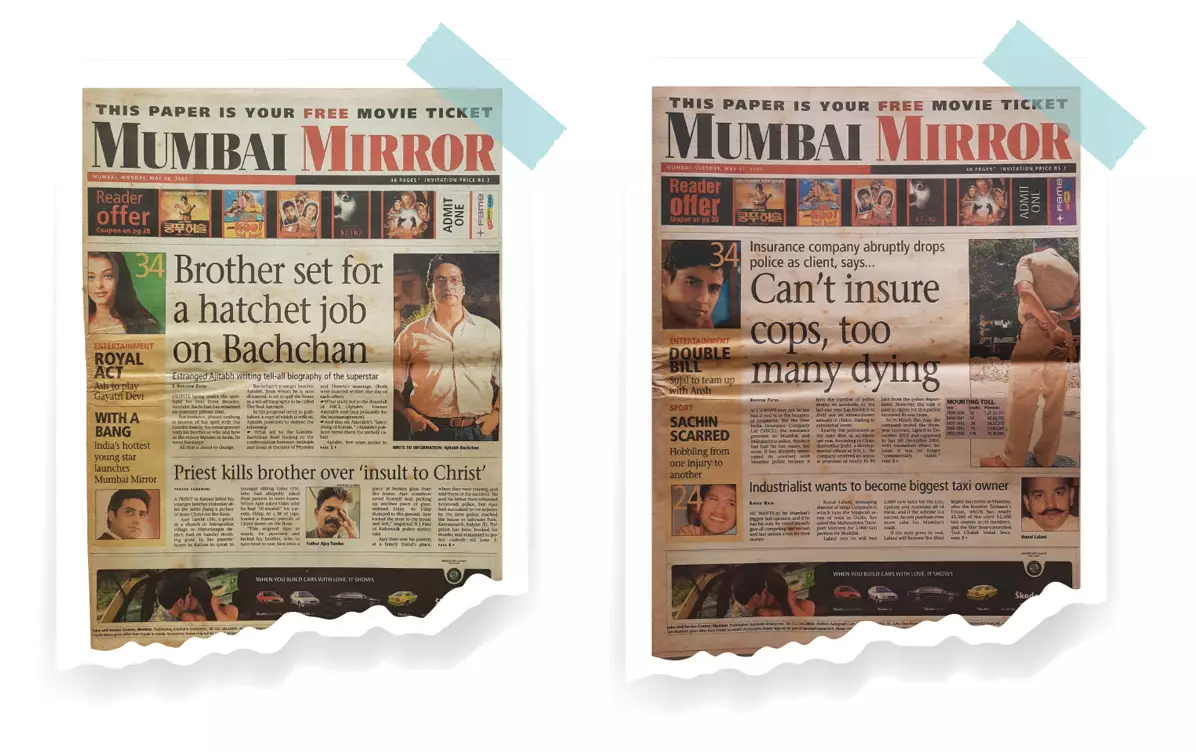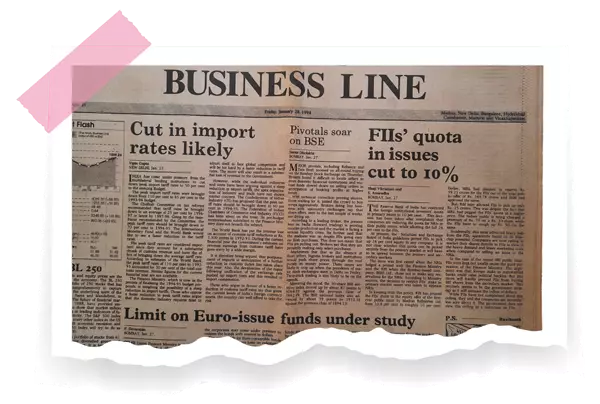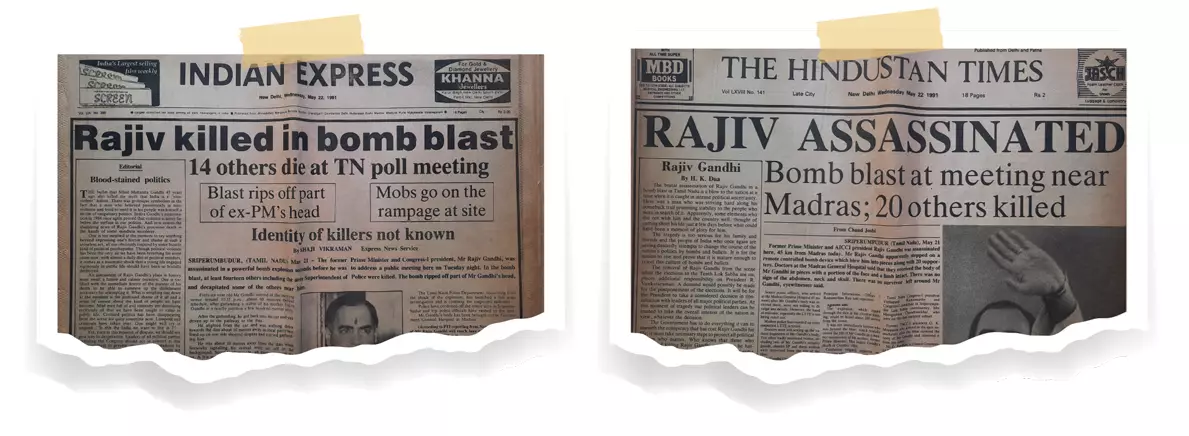Treasures from the personal archive of Vimal Parmar
For some time now, independent marketing consultant and digital print evangelist Vimal Parmar has been collecting print material, either for reference or to understand how technology has evolved over the years — at times, it could be the illustrations in them or the content itself. He shares an exclusive peek at his collection with PrintWeek
18 Aug 2021 | By PrintWeek Team
Mumbai Mirror, volume 1, Issues 1 and 2

I had this habit of collecting Volume 1, Issue 1, be it magazines and newspapers. Over the years, I have misplaced many. Some remain with me though, like these Mumbai Mirror issues, dated Monday 30 May and Tuesday 31 May 2005. If it is a publication, I usually collect the first three issues. Unfortunately, I lost the third one.
The Pioneer, volume 1, issues 1 and 2, New Delhi edition

It was already in its 127th year of publication when it brought out its inaugural New Delhi edition on Saturday, 14 December 1991. Vinod Mehta’s editorial began with a header, “Does anyone in Delhi want to read this paper?” and to further quote a line... “The Pioneer enters Delhi with humility and hope. Publishing is a risky business at the best of times, more so in a city indifferent to arrivistes.”
Priced at Rs 2.30, the entire 16-page paper was in black & white except the 16-page magazine with a dash of colour and a cover story that talked about the success of Kapil Dev’s video magazine devoted to sports with a circulation of 10,000 cassettes. Talking of video cassettes, how technology has moved in a matter of 30 years!
Volume 1 issue 2 rolled out on a Sunday morning. Priced at Rs 2.50, it had 12 pages with an 8-page colour supplement. My Tarot Card prediction read: “You instinctively move in a new direction with optimism and trust.” Probably some truth in it as by February 1992, I got a promotion and a transfer to Bangalore during my stint at then Agfa-Gevaert India, which later became Allied Photographics.
The Hindu Business Line, volume 1, number 1

In 2019, this business daily completed 25 years. The inaugural issue, in single colour, was launched on Friday, 28 January 1994, with 16 pages at Rs 4.00. Tucked on the left-hand top corner, in a neat box, silver (kg) Rs 6,680 read the small print under Market Flash. I secretly wished to buy a kilo at that time, but it never happened.
Newspaper as a birthday gift

My daughter was born on 6 January in New Delhi. So, on 7 January, I bought a copy of each different English language newspapers that were available. Lost most of them except this New Delhi edition of The Times of India. I did not know then that digital was just around the corner and my daughter Shivani Parmar, who is now a brand strategist and a rally driver will consume news, very selectively, on her smartphone. While she still buys books, not sure if she will ever buy a newspaper as much as I would want her to.
Outlook, volume 1, number 2

The issue that I have reads volume 1, no 2 but the editorial by Vinod Mehta reads as though this is the first issue. Even the Outlook website refers to this issue as the first issue. I had quite a few of the subsequent issues (priced Rs 10.00) but only this sole one now remains. Wonder why I have been hoarding these printed publications for close to 25 years. In some cases, more. Why print fascinates me can only be understood by those who are equally passionate about print.
The layout and design was quite refreshing and so were the illustrations by Ajit Ninan. The two-page write-up under marketing, titled Unfaithfully Yours, is an interesting read. It spoke about consumers who are not loyal to a brand. One line in the article that made more sense to me happens to be... “The more visible your brand is on the retail shelves, the better the chances of it being picked up." Rings a bell, right...?
Newspaper headlines

Before I could realise, my collection of newspapers with major headlines became unmanageable. Slowly and slowly with every shifting of residence and cities, I started discarding them one by one till only these copies of Hindustan Times and The Indian Express remained. New Delhi edition, Wednesday, 22 May 1991.
The last line in the editorial by HK Dua in HT made a very valid point. It read... “But on the people spread across the vast political spectrum called India devolves special responsibility: They must reject the culture of violence."
Industry, a magazine for manufacturers

Edited by KM Banerjee, this is issue 386, May 1942. Probably an important business publication of its time, it carried info on various businesses, filled with classified advertisements and comprehensive guidelines on various manufacturing processes.
It was interesting to see some advertisements released by printers.
With regard to binding, I wonder why stapling was not done. Probably sewing was cheaper and could be done manually.
Postcards with embroidery

Postcards with embroidery are a collector's item now. Especially the ones that were produced in Spain in 1950s. These were also known as Madrid Postcards. I am a big fan of hand-embroidered products. Probably because I got to see some fabulous needlework art created by my mother, aunt and other family members in my childhood. Embroidery was their hobby.
Coming back to these postcards, these are such beautiful creations. An amazing collaborative effort between a printer and a needlework artist. No smartphone can ever match this tactile experience.
And yes, you will be surprised to hear this, but probably in the sixth standard, instead of drawing and painting, our class teacher suggested we take up needlework for a year. Boys included. And yes, we did. Each one of us embroidered a beautiful pattern on a cross-stitch cloth. Same design but we had the liberty to select our own colours. It was difficult till I got a hang of the process. I remember my mother finally made a small bag out of that cloth. Probably that early interaction with colourful threads had a role to play in the way I use colour in my images now.
Letterpress wooden blocks

This is probably more than 60 years old. It belonged to my late grandfather Kalyanji Parmar. This has nothing to do with religion. He was a follower of Gandhian philosophy and values. He had a large collection of books written by or written about Mahatma Gandhi. We lost them all. While he had a large collection of wooden blocks, I have managed to retain only these two. He would give it to the local printer (earlier in Kolkata and subsequently in Brahmapur in Odisha) with instructions to make prints in red. These prints he would then pass on to whomever he met during his travels along with a brief sermon to follow Gandhian values. Some of these ended up as bookmarks. I remember every book of his would have one of these.
Advertisement in industry magazine

Advertisement in Industry Magazine, titled A False Economy. This is interesting and a must read.
An independent marketing consultant and digital print evangelist with over 36 years of experience in the imaging industry, Vimal Parmar managed a diverse range of B2B and B2C products – photographic equipment and consumables; graphic art material; medical imaging films and chemicals; inkjet, coated and business papers, synthetic substrates in the space of sales and marketing, product management, technical support, and consumer research. He was associated with three organisations Vakil & Sons (1982-84); Agfa Gevaert India Limited / Allied Photographics India Limited (1985-2002); TechNova Imaging Systems (2002-19).











 See All
See All